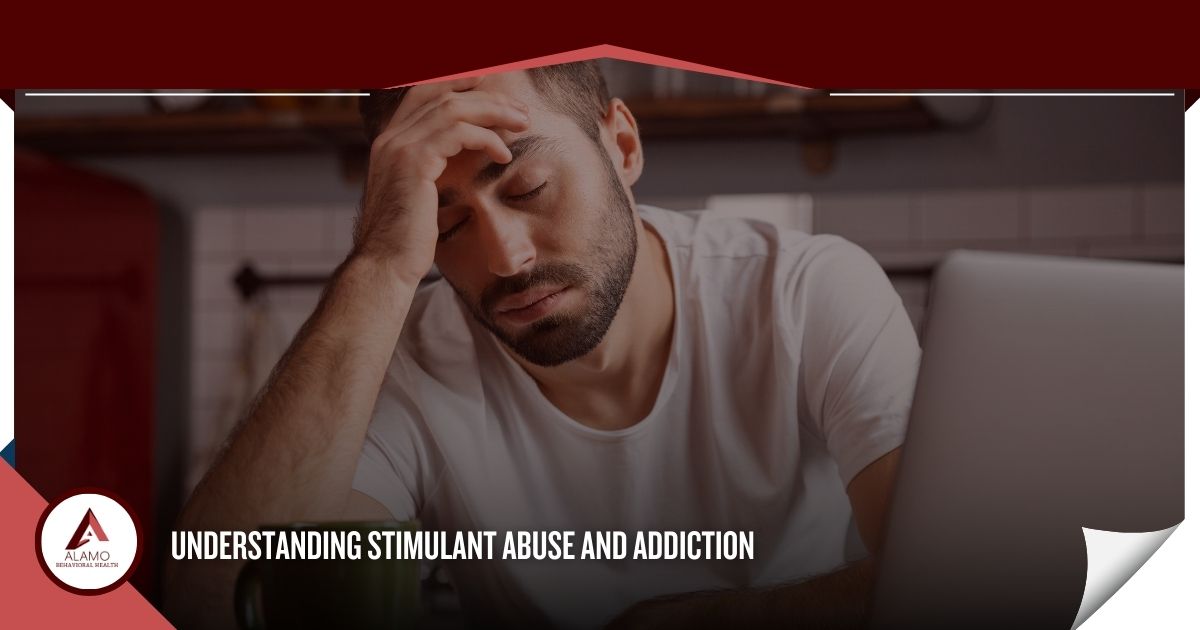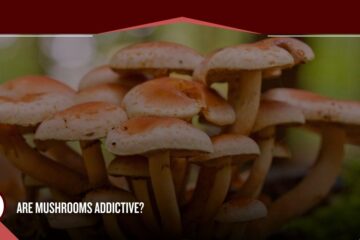Millions of people in the United States live with medical and psychological conditions that require stimulant medications. Prescription medications can help people manage symptoms of mental and physical health conditions, but some have unintended side effects, including addiction.
People who abuse prescription stimulants may become dependent on them. Prescription and illicit stimulants have a high risk of addiction. It is important to understand the risks and long-term dangers of misusing stimulant drugs.
This article will explore stimulant abuse and addiction.
What you will learn:
- The effects and risks of stimulant misuse
- Commonly abused stimulant drugs
- How to recognize stimulant abuse
- Where to find treatment for stimulant addiction
If you or someone you love struggles with stimulant abuse or addiction, you are not alone. Contact the specialists at Alamo Behavioral Health to learn about our comprehensive treatment programs. You can also find support at any stage of your recovery.
What are Stimulants?
Stimulants are a class of drugs that increase central nervous system (CNS) activity. They affect norepinephrine and dopamine, brain chemicals that affect the body in many ways.[1]
There are many different types of stimulants, including both prescription and illicit drugs. The effects of stimulants vary depending on the type of drug someone uses but generally include:
- Increased alertness
- More energy
- Better attention
Commonly abused prescription stimulants include:
- Ritalin (methylphenidate)
- Desoxyn (methamphetamine)
- Concerta (methylphenidate)
- Dexedrine (dextroamphetamine)
- Adderall (mixed amphetamine salts)
Commonly abused illicit stimulants include:
- Crack cocaine
- Methamphetamine
- Cocaine
People with attention deficit hyperactivity disorder (ADHD) may take prescription stimulants to manage their symptoms. Others may use illicit stimulants for their effects. Whether someone abuses prescription or illicit stimulants, misusing these drugs can lead to severe, long-term harm.
Stimulant Abuse Statistics
Research from the 2020 National Survey on Drug Use and Health showed that stimulant abuse is a serious problem in the United States. The data from this survey revealed:[2]
- About 7% of all people in the United States abused a stimulant in the previous year
- Over 750,000 over the age of 12 had a prescription stimulant use disorder
- Over 3 million people abused cocaine
- Over 3 million people misused prescription stimulants
- About 1 in 7 people misusing stimulants abused methamphetamine
Stimulant abuse and addiction are complex conditions requiring significant treatment and support. If you or someone you love struggles with stimulant abuse, you must seek help. Contact the specialists at Alamo Behavioral Health for support.
The Effects and Risks of Stimulant Abuse
Stimulants work by increasing CNS activity. People who abuse prescription or illegal stimulants may experience a range of effects, including:[1,3]
- Elevated heart rate
- Increased blood pressure
- Anxiety
- Agitation
- Increased energy
- Euphoria
The pleasurable effects of stimulants can make people want to use them more. Over time, people who misuse stimulant drugs may develop tolerance to them. This means they require higher or more frequent doses of the drugs to feel the desired effects.
Over time, stimulant abuse can change how the brain and body work, leading to physical dependence. People with stimulant addiction typically require professional treatment and ongoing support to quit using the drugs and prevent relapse.
Potential long-term effects of stimulants include:[4]
- Cardiovascular problems (such as hypertension, heart disease, and stroke)
- Psychiatric issues (like anxiety, paranoia, and hallucinations)
- Cognitive impairment (including memory problems and difficulty concentrating)
- Physical health deterioration (such as weight loss, malnutrition, and dental problems)
- Risk of addiction and dependence
Signs of Stimulant Abuse
Recognizing the signs of stimulant abuse can help you begin working toward recovery or helping someone find help. Stimulant abuse can change how a person behaves, thinks, and feels. You may notice signs like:
- Agitation
- Dilated pupils
- Excessive talking
- Neglecting hygiene
- Falling behind on responsibilities
- Quick, dramatic weight loss
- Missing work or school or neglecting hobbies
- Significant increase in energy
- Isolating or spending time with a new group of friends
- Spending a lot of time getting, using, and recovering from using stimulants
- Finishing prescriptions early
- Becoming dishonest or secretive
- Experiencing withdrawal symptoms when not using stimulants
- Having cravings for stimulants
People who become addicted to stimulants will continue to use them, even when facing extreme consequences related to their substance use. Professional treatment and ongoing support are essential.
Treating Stimulant Abuse and Addiction
People who become addicted to stimulant drugs require intensive treatment, education, and support to stop using these drugs safely. Stimulant addiction treatment usually happens in stages, beginning with an assessment to determine the right course of treatment.
Many people with stimulant addiction require a medically-supported detox program. During stimulant detox, medical and mental health specialists assess people’s withdrawal symptoms and provide necessary treatment. Detox treatment may include:
- Medications to manage withdrawal
- Emotional support
- Mental health treatment
- Round-the-clock supervision and availability of treatment
- A secure environment
After completing a detox program, people follow a tailored treatment plan to address their specific needs. Stimulant abuse treatment plans may include:
- Medical care and medications
- Mental health treatment, including specialized behavioral therapies and medications
- Individual, family, and group therapy
- Relapse prevention education
- Holistic therapies like nutrition counseling, art therapy, exercise, and mindfulness
- Aftercare planning and support
If you or someone you love struggles with stimulant abuse, you are not alone. Overcoming stimulant addiction is possible with the right support. Find the treatment and care you deserve by contacting the Alamo Behavioral Health specialists now.
References:
- National Institute of Health (NIH): Chapter 2—How Stimulants Affect the Brain and Behavior
- Substance Abuse and Mental Health Services Administration (SAMHSA): 2020 National Survey on Drug Use and Health (NSDUH) Releases
- Drug Enforcement Administration (DEA): Stimulants
- American Psychological Association: The danger of stimulants







